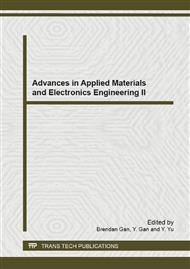p.154
p.159
p.163
p.168
p.172
p.177
p.182
p.189
p.194
The Effect of Fly Ash on Lime Mortar on Elevated Temperature
Abstract:
To enhance the mechanical and compressive strength of lime mortar(lime-sand ) the fly ash was added to the compound to improved the engineering performance of lime mixture .The addition of fly ash and lime stone dust to clay soils reduce their plasticity characteristics, swell potential and improve their compressive strength (Brooks et al. 2011) .Boardman et al (2001) observed that no significant pozzolonic activity appears to take place until 7 days of curing during their experiments at room temperature .In this research the effect of fly ash at different range from 30 to 70 percent of mix by varying lime percentage from 6 to 20 percent with thermodynamic parameters of their reaction was assessed in normal and raised temperature by curing compacted specimens in the laboratory .The compressive strength of fly ash and lime mixture are determined on curing period up to 28 days in normal state and one days on raised one .The Result portrayed that raised temperature highly boosted the compressive strength of the mix from 30 to 120 percent at different range of fly ash mixture with lime.
Info:
Periodical:
Pages:
172-176
Citation:
Online since:
April 2013
Authors:
Keywords:
Price:
Сopyright:
© 2013 Trans Tech Publications Ltd. All Rights Reserved
Share:
Citation:


